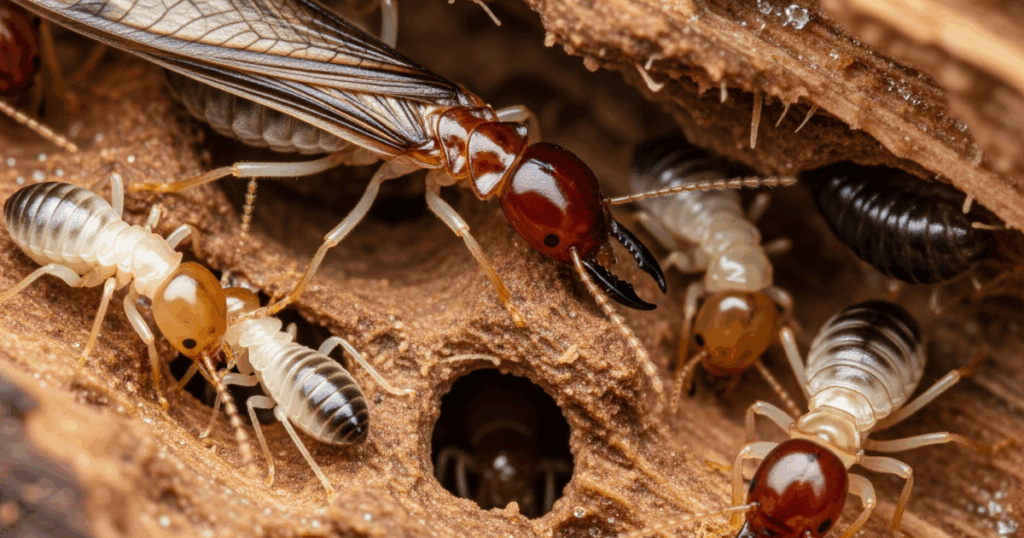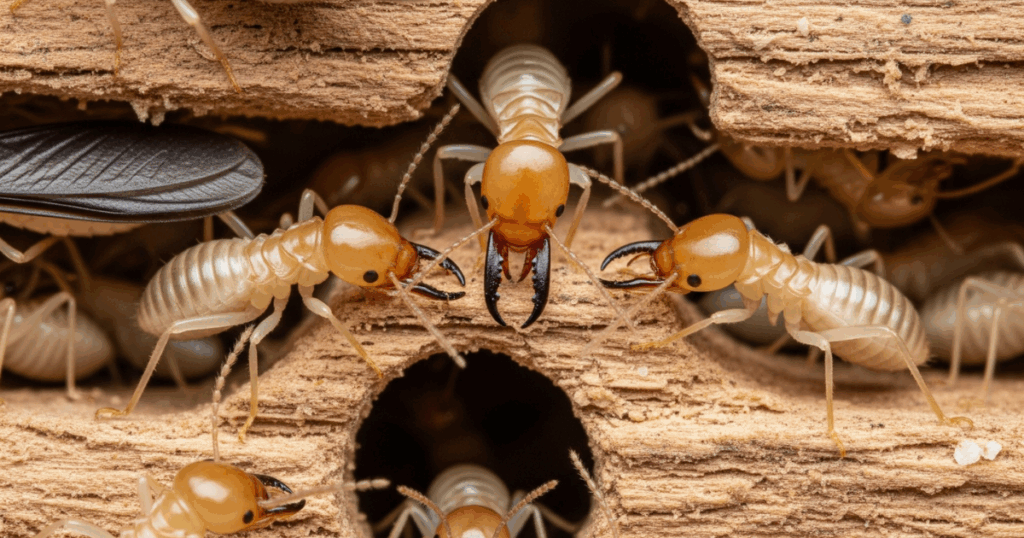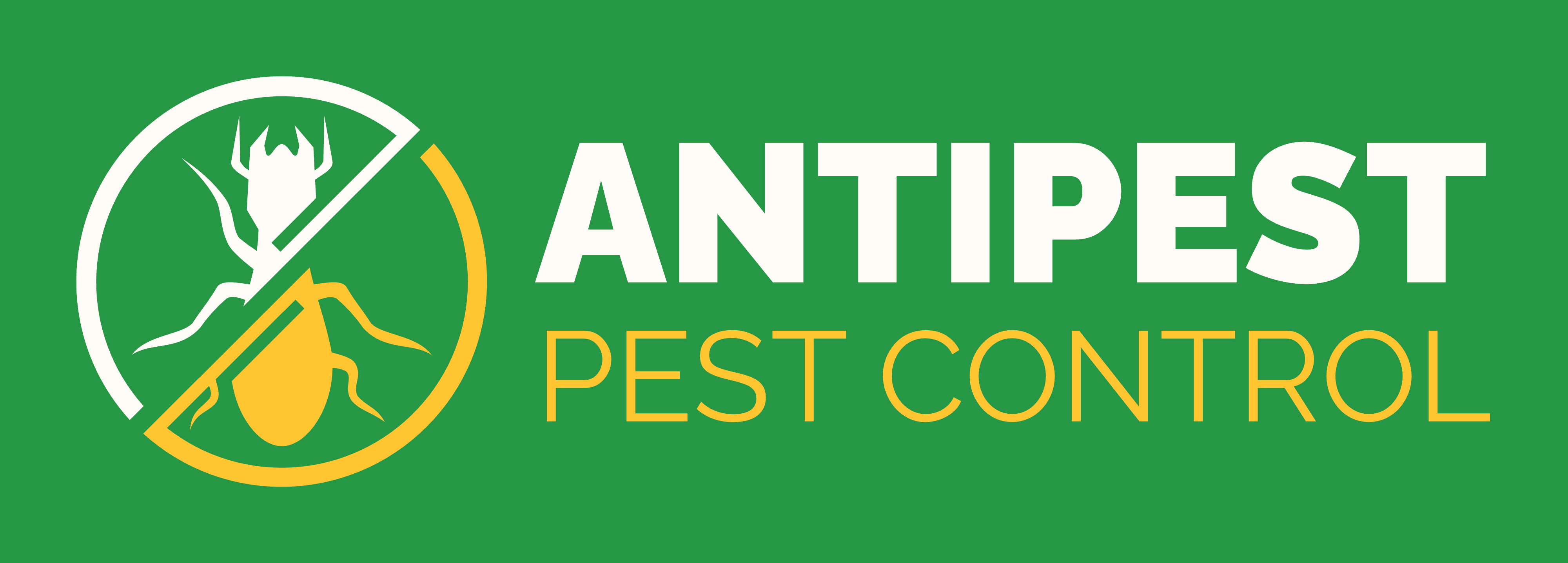Which Chemical Is Used to Kill Termites : Top 5 examples 1)Chlorpyrifos 20% EC, 2)Imidacloprid 30.5% SC, 3) Fipronil 2.5% EC, 4)Boric Acid, 5)Diflubenzuron.
Understanding Which Chemical Is Used to Kill Termites requires knowledge of various application methods and chemical formulations. Professional exterminators know exactly which chemical is used to kill termites most effectively based on infestation severity and building structure. The selection of which chemical Is used to kill termites depends on factors like termite species, treatment area accessibility, and safety requirements.
Modern research continues advancing which chemical Is used to kill termites while maintaining environmental safety standards. Homeowners frequently ask which chemical is used to kill termites when facing infestations for the first time.
Table of Contents
What Are Termites ?

Termites are wood-eating insects that cause significant structural damage to homes and buildings. These social insects live in colonies and feed on cellulose-based materials like wood, paper, and cardboard. They require moisture to survive and create extensive tunnel systems to move between their nests and food sources.
Termites have complex social structures with specialized castes including workers, soldiers, and reproductive members that maintain colony functions.
Types of Termites

- Subterranean Termites: Live underground and enter homes through soil contact points. They require constant moisture and create mud tubes to travel between their colonies and food sources. These termites are responsible for most structural damage in residential properties and require soil-based treatment approaches.
- Drywood Termites: Infest dry wood directly and don’t require soil contact. They create galleries inside wooden structures and are harder to detect than subterranean termites. These termites can survive with minimal moisture and often require localized treatment methods for effective control.
- Dampwood Termites: Prefer moist, decaying wood and are commonly found in areas with high humidity. They typically infest logs, stumps, and wooden structures with moisture problems, making moisture control essential for prevention.
- Formosan Termites: An aggressive subterranean species that builds large colonies and causes rapid structural damage. They create aerial colonies in walls and attics, requiring specialized treatment approaches including foam applications.
Top 5 Types of Termite Killer Chemicals
The top termite killer chemicals include Chlorpyrifos, effective for soil and wood treatments with long-lasting action but a strong odor; Imidacloprid, a non-repellent systemic insecticide safer for humans and suitable for structural applications; and Fipronil, which forms durable, water-resistant barriers ideal for subterranean termite control. Boric Acid offers an eco-friendly option for indoor use, while Diflubenzuron disrupts termite development in baiting systems for long-term colony elimination.
These chemicals balance effectiveness, safety, and environmental impact across various termite control needs.
1. Chlorpyrifos 20% EC
This versatile insecticide effectively controls all types of pests including termites. Understanding which chemical Is used to kill termites helps identify chlorpyrifos as a liquid termite repellent by targeting the nervous system. The chemical is mixed in a 1:19 ratio with water for application and provides comprehensive pest management.
| Best for | Home use and outdoor applications |
| Price Range | ₹400 – ₹600 |
| Pros | Long-lasting, effective on various termite species |
| Cons | Strong odor during application |
- Effective against sucking, biting, and chewing pests
- Provides soil treatment protection
- Multi-purpose insecticide for comprehensive pest control
2. Imidacloprid 30.5% SC
This anti-repellent chemical is undetectable by termites and systematically attacks their central nervous system. When considering which chemical is used to kill termites, imidacloprid binds strongly to termite neuron receptors while being less toxic to mammals, making it safer for residential applications.
| Best for | Structural and wood treatments |
| Price Range | ₹700 – ₹1,000 |
| Pros | Durable, multi-purpose, low human toxicity |
| Cons | Slower action compared to other chemicals |
- Mixed at 10.5ml per 5 liters of water
- Non-repellent formula ensures termites contact the chemical
- Provides systemic control of entire colonies
3. Fipronil 2.5% EC
Known for its long-lasting effect, this chemical disrupts the termite’s central nervous system. Property owners asking which chemical is used to kill termites should know fipronil forms water-resistant barriers ideal for moisture-prone areas and creates invisible treatment zones that termites cannot detect.
| Best for | Exterior and foundation treatments |
| Price Range | ₹800 – ₹1,200 |
| Pros | Durable, water-resistant, comprehensive protection |
| Cons | Professional application recommended |
- Excellent for subterranean termite control
- Creates strong soil barriers
- Transfers between termites for colony elimination
4. Boric Acid
This mineral-based treatment is poisonous to termites but safer for humans and pets. Natural approaches to which chemical is used to kill termites include boric acid, which disrupts termite digestive systems when ingested and provides natural pest control solutions.
| Best for | Indoor spot treatments and wood protection |
| Price Range | ₹200 – ₹400 |
| Pros | Low toxicity, safe for household use |
| Cons | Limited effectiveness on large infestations |
- Natural mineral compound
- Applied directly to wood surfaces
- Eco-friendly alternative to synthetic chemicals
5. Diflubenzuron
Used in termite baiting systems to disrupt the molting process. Research on which chemical is used to kill termites through development interference shows this chemical interferes with termite development and provides gradual colony elimination through affected individuals.
| Best for | Baiting system applications |
| Price Range | ₹800 – ₹1,100 |
| Pros | Targets entire colonies, safe application |
| Cons | Slower action, requires monitoring |
- Interrupts termite life cycles
- Effective long-term control
- Minimal environmental impact
List of Best Termite Killer Chemical in India with Price
| Chemical | Price Range (₹) | Application Method | Coverage Area | Effectiveness Rating |
| Chlorpyrifos 20% EC | 400-600 per liter | Soil treatment | 100-150 sq ft per liter | 8/10 |
| Imidacloprid 30.5% SC | 700-1,000 per liter | Wood/soil treatment | 80-120 sq ft per liter | 9/10 |
| Fipronil 2.5% EC | 800-1,200 per liter | Foundation treatment | 90-130 sq ft per liter | 9/10 |
| Bifenthrin | 600-900 per liter | Perimeter treatment | 100-140 sq ft per liter | 8/10 |
| Chlorantraniliprole | 900-1,300 per liter | Professional application | 70-100 sq ft per liter | 9/10 |
| Permethrin | 500-750 per liter | General treatment | 120-160 sq ft per liter | 7/10 |
| Cypermethrin | 450-650 per liter | Quick treatment | 110-150 sq ft per liter | 7/10 |
| Bistrifluron | 1,200-1,800 per liter | Advanced treatment | 60-90 sq ft per liter | 10/10 |
| Diflubenzuron | 800-1,100 per liter | Baiting system | Variable coverage | 8/10 |
| Boric Acid | 200-400 per kg | Surface application | 200-300 sq ft per kg | 6/10 |
Learn how to get rid of wood eating insects and keep your furniture safe for years.
How to Choose the Best Chemical for Your Needs?
Selecting the right termite control chemical requires evaluating infestation severity, termite species, and application areas to match treatment methods with specific pest control needs. Understanding which chemical is used to kill termites depends on balancing budget considerations and long-term protection value against environmental safety requirements, particularly for properties near water sources or sensitive ecosystems.
The most effective approach combines understanding termite behavior with chemical properties to ensure targeted, cost-effective, and environmentally responsible pest management solutions when determining which chemical is used to kill termites.
- Assess Infestation Severity: Light infestations may respond to natural treatments like boric acid, while severe infestations require professional-grade chemicals like fipronil or imidacloprid. Determining which chemical is used to kill termites most effectively starts with understanding the extent of the problem.
- Consider Termite Species: Subterranean termites require soil-applied treatments, while drywood termites need direct wood treatments. Knowing which chemical is used to kill termites of specific species ensures targeted and effective control measures.
- Evaluate Application Areas: Indoor treatments require safer chemicals with lower toxicity, while outdoor soil treatments can utilize stronger formulations. The choice of which chemical is used to kill termites safely depends on proximity to living spaces and vulnerable populations.
- Budget and Long-term Value: While premium chemicals cost more initially, they often provide longer protection periods, making them more economical over time. Understanding which chemical is used to kill termites cost-effectively involves calculating long-term treatment expenses.
- Environmental Considerations: Properties near water sources or sensitive ecosystems require environmentally friendly options like bistrifluron or boric acid. Selecting which chemical is used to kill termites responsibly protects both effectiveness and environmental health.
Application Methods and Usage Guidelines
Soil treatment methods including trenching, rodding, and sub-slab injection create protective chemical barriers around foundations, with professional knowledge of which chemical is used to kill termites ensuring proper dilution and application rates. Wood treatment techniques such as direct injection, surface application, and foam treatments deliver targeted protection to infested areas and vulnerable surfaces where termites feed and nest.
Safety protocols require protective equipment, proper ventilation, and secure storage practices when determining which chemical is used to kill termites to ensure effective and safe application procedures.
Soil Treatment Applications
- Trenching Method: Dig narrow trenches alongside foundation walls and flood with measured termiticide amounts. This method creates continuous chemical barriers that prevent termite entry through soil contact points. Professional knowledge of which chemical is used to kill termites ensures proper dilution and application rates.
- Rodding Technique: Use hollow steel tubes to inject termiticides directly into soil at various depths. This approach allows precise placement of chemicals at footing levels where termites typically travel. Understanding which chemical is used to kill termites helps determine injection spacing and depth requirements.
- Sub-slab Injection: Apply chemicals beneath concrete slabs through pre-drilled holes to create horizontal barriers. This method protects structures from subterranean termite invasion through foundation gaps while ensuring optimal coverage.
Wood Treatment Methods
- Direct Injection: Insert termiticides directly into termite galleries using specialized injection equipment. This targeted approach delivers chemicals where termites are actively feeding and nesting, maximizing contact with active populations.
- Surface Application: Apply chemicals to exposed wooden surfaces using brushes or sprayers for preventive protection. This method creates protective barriers on vulnerable wood surfaces that remain effective over extended periods.
- Foam Treatments: Use expanding foam formulations to reach wall voids and inaccessible areas. Foam treatments provide comprehensive coverage in spaces where liquid applications cannot penetrate effectively, ensuring complete protection.
Safety Precautions and Guidelines
- Wear protective equipment including gloves, masks, and coveralls during application
- Follow manufacturer’s dilution ratios precisely to ensure effectiveness and safety
- Keep children and pets away from treated areas during application and drying periods
- Ensure proper ventilation when applying chemicals in enclosed spaces
- Store unused chemicals securely away from food, water, and living areas
Alternatives to Chemical Treatments
Heat treatment and physical barriers like steel mesh and sand provide chemical-free termite control through temperature elimination and structural prevention methods that eliminate the need to research which chemical is used to kill termites. Biological solutions including beneficial nematodes and fungal pathogens offer eco-friendly alternatives that naturally target termite populations without environmental harm, providing options beyond determining which chemical is used to kill termites.
Natural deterrents such as essential oils, diatomaceous earth, and cardboard traps provide safe, non-toxic options for monitoring and controlling minor infestations in sensitive environments.
Heat Treatment Solutions
Professional heat treatment raises indoor temperatures to 120-140°F, levels fatal for all termite life stages. This method penetrates wood completely without leaving chemical residues, making it ideal for sensitive environments like food processing facilities or homes with chemical sensitivities. Heat treatment eliminates the need to determine Which Chemical Is Used to Kill Termites in certain situations.
Physical Barrier Systems
- Steel Mesh Barriers: Install stainless steel mesh around foundations during construction to physically block termite entry. These barriers provide permanent protection without requiring chemical maintenance or reapplication.
- Sand Barriers: Create barriers using specially graded sand particles too large for termites to move but too small to tunnel through. This method provides long-term protection in new construction applications.
- Chemical-Resistant Materials: Use naturally termite-resistant building materials like concrete, steel, and certain treated woods to reduce infestation risks.
Biological Control Methods
- Beneficial Nematodes: Introduce Steinernema feltiae and other nematode species that feed on termite larvae. These microscopic organisms provide ongoing biological control without environmental harm, offering an alternative to researching Which Chemical Is Used to Kill Termites.
- Fungal Pathogens: Utilize Beauveria bassiana and Metarhizium anisopliae fungi that infect and kill termites naturally. These biological agents spread through colonies and provide sustained population reduction.
Natural Deterrent Options
- Essential Oil Treatments: Apply neem oil, orange oil, and tea tree oil as natural repellents for minor infestations. These oils disrupt termite feeding behavior while remaining safe for household use, providing options beyond Which Chemical Is Used to Kill Termites.
- Diatomaceous Earth: Use food-grade diatomaceous earth to damage termite exoskeletons through physical abrasion. This natural mineral provides non-toxic pest control for localized treatments.
- Cardboard Traps: Set up moistened cardboard traps to attract and capture termites for removal. This method helps monitor termite activity and provides supplemental control in integrated pest management programs.
Conclusion
Effective termite control requires understanding the diverse range of chemicals and application methods available for different situations. The expanded list of ten chemicals provides comprehensive options for addressing various termite species and infestation scenarios. Determining Which Chemical Is Used to Kill Termites most effectively involves careful consideration of safety, cost, application requirements, and long-term protection goals.
For comprehensive and hassle-free termite removal and long-term pest prevention, trust the professionals at Antipest Office. Visit us at the Antipest Office, Our trained technicians use safe and effective methods to protect your home and business. For service bookings and consultations, call us at +91 9819018398 .
Which Chemical Is Used to Kill Termites? – FAQs
Which chemical is most commonly used to kill termites?
Chlorpyrifos 20% EC is widely used for termite control due to its effectiveness on various termite species and soil treatment application.
Is imidacloprid safe for home use against termites?
Yes, imidacloprid 30.5% SC is considered safer for residential use because it is less toxic to mammals while effectively targeting termites’ nervous system.
What is the role of fipronil in termite treatment?
Fipronil 2.5% EC disrupts the termite nervous system, forms durable water-resistant barriers, and is excellent for subterranean termite control.
Can boric acid be used to kill termites?
Boric acid is a mineral-based treatment that is poisonous to termites but safer for humans and pets, best for indoor spot treatments and wood surface application.
Which Chemical Is Used to Kill Termites Most Effectively?
Chemicals like Chlorpyrifos, Imidacloprid, and Fipronil are commonly used due to their ability to disrupt termite nervous systems and provide long-lasting protection.
Which Chemical Is Used to Kill Termites Safely in Homes?
Imidacloprid 30.5% SC is often chosen for home use because it targets termites systematically while being less toxic to humans and pets.
Which Chemical Is Used to Kill Termites Through Soil Treatment?
Fipronil 2.5% EC is widely used for soil treatments as it forms water-resistant barriers that termites cannot detect, effectively preventing subterranean termite infestation.
Which Chemical Is Used to Kill Termites in Baiting Systems?
Diflubenzuron is used in termite baiting systems to interrupt termite molting, leading to gradual colony elimination over time.
Which Chemical Is Used to Kill Termites With Minimal Environmental Impact?
Boric acid is a mineral-based chemical used for termite control indoors that offers a safer alternative with low toxicity to humans and pets.
Which Chemical Is Used to Kill Termites Quickly in Emergency Situations?
Chlorpyrifos 20% EC is often chosen for rapid termite control because it acts quickly on termites’ nervous systems, making it suitable for urgent infestations in accessible areas.

